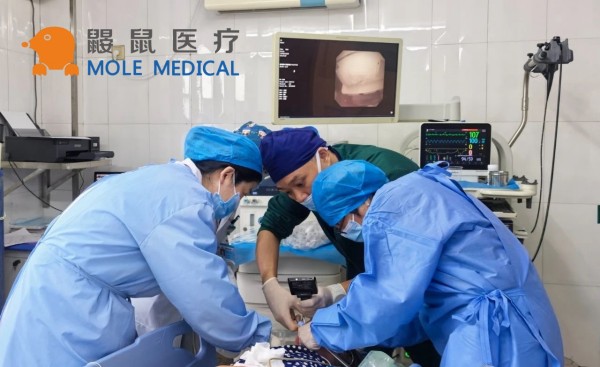Understanding Ureteroskop: Kidney Stone Treatment
Dec 23, 2023
Kidney stones can cause severe pain and discomfort. Fortunately, there are minimally invasive options available to provide relief, such as the ureteroscopic procedure.
Ureteroskop is an endoscopic surgical technique used to treat urinary stones, in which a flexible or rigid ureteroscope is inserted into the ureter to visualize and remove the stones. This procedure not only has a high success rate but also offers reduced recovery time and minimal post-operative discomfort.
Key Takeaways
- Ureteroskop is a minimally invasive procedure used to treat urinary stones.
- A ureteroscope is inserted into the ureter to visualize and remove the stones.
- The procedure has a high success rate and offers reduced recovery time and minimal post-operative discomfort.
- Patients may experience some discomfort during recovery, but common care instructions include drinking plenty of fluids and taking prescribed pain medication.
- Consult a healthcare professional to determine if ureteroskop is the right option for your kidney stone treatment.
What is Ureteroskop?
Ureteroskop is an endoscopic surgical technique used to treat urinary stones. It involves the insertion of a flexible or rigid ureteroscope into the ureter to visualize and remove kidney stones. Ureteroskop can also be used in diagnosing and treating other conditions affecting the ureter and kidneys.
Benefits of Ureteroskop
Patients with kidney stones can benefit greatly from a ureteroscopic procedure. One of the major advantages of this minimally invasive procedure is the reduced recovery time and minimal post-operative discomfort. This is because the procedure is performed using a small flexible or rigid ureteroscope, which is inserted into the ureter through the bladder to reach the kidney and visualize the stones. The ureteroscope’s ability to specifically target and remove kidney stones leads to a successful outcome for many patients.
With a high success rate for kidney stone treatment, ureteroscopy is an attractive option for patients looking to remove stones without the need for more invasive surgery. The procedure has also been found to be effective in cases where other treatments have been unsuccessful or are not suitable. Patients who undergo ureteroscopy for kidney stone treatment are likely to experience a swift recovery and get back to their normal daily activities quickly.
Overall, the benefits of undergoing a ureteroscopic procedure for kidney stone treatment cannot be overstated. Patients experience minimal discomfort, reduced recovery time, and a high rate of success in stone removal. Fortunately, ureteroscopic procedures are readily available in most healthcare facilities, making it easy for patients to receive the care they need.
Ureteroskop Procedure: Step by Step

The ureteroscopic technique is a minimally invasive procedure used to remove kidney stones from the urinary tract. Here is a step-by-step breakdown of the process involved in the ureteroscopic procedure for kidney stone treatment:
Pre-operative Preparations
Prior to the procedure, the patient may need to undergo certain tests, such as blood work or imaging, to determine the size and location of the kidney stones. The doctor may also recommend stopping certain medications or abstaining from eating and drinking, depending on the specific case.
Anesthesia Options
The patient may receive general anesthesia or local anesthesia, depending on the preference of the doctor and the patient’s medical history.
Positioning of the Patient
The patient is positioned on their back on the operating table with their feet elevated in stirrups. This allows for access to the urinary tract.
Guiding the Ureteroscope
The ureteroscope is carefully guided into the ureter through the urethra and bladder. This allows for visualization of the kidney stone, which can then be grasped and removed using specialized instruments.
Removing the Kidney Stones
Once the kidney stone is visualized, it is grasped and removed using specialized retrieval devices. In some cases, a laser may be used to break up larger stones into smaller pieces before being removed.
Overall, the ureteroscopic procedure is a highly effective way to remove kidney stones from the urinary tract. It is a minimally invasive procedure that typically results in a quick recovery time and successful outcomes.
Recovery and Aftercare
After undergoing a ureteroscopic procedure for kidney stone treatment, recovery and aftercare are key components to ensuring a successful outcome. The recovery process typically involves minimal discomfort and a short hospital stay, with most patients able to resume their daily activities within a few days.
Common post-operative care instructions include drinking plenty of fluids to help flush out any remaining stone fragments and taking prescribed pain medication to manage any discomfort. Your healthcare provider will also likely advise avoiding strenuous activity and heavy lifting for a period of time after the procedure.
While complications are uncommon, potential side effects and risks may include mild bleeding, infection or difficulty urinating. In such cases, it is important to consult with your healthcare provider immediately.
In all cases, it is important to follow all provided aftercare instructions and attend follow-up appointments as scheduled in order to ensure a successful recovery and reduce the risk of future kidney stones.
Success Rate and Outlook
Ureteroskop has a high success rate in treating kidney stones. According to studies, the procedure has an overall success rate ranging from 70% to 90%, depending on the size and location of the stone. Large stones may require more than one procedure for complete removal.
Factors that may affect the success rate of ureteroskop include the size and location of the stone, as well as the patient’s overall health. In some cases, the procedure may not be suitable for individuals with certain medical conditions or anatomy.
However, for those who are eligible for the procedure, the outlook is generally positive. Patients undergoing ureteroskop have a high chance of becoming stone-free and experiencing relief from symptoms.
Conclusion
Overall, ureteroskop is an effective and minimally invasive procedure for the treatment of kidney stones. With its ability to specifically target and remove stones, patients can experience a successful outcome and a quick recovery time.
If you are experiencing symptoms of kidney stones, it is important to speak with a healthcare professional to determine if ureteroskop is a suitable treatment option for you. By undergoing this procedure, you can potentially become stone-free and alleviate discomfort caused by kidney stones.
Don’t let kidney stones cause unnecessary suffering. Consider speaking with a medical professional about the benefits of ureteroskop for kidney stone treatment.
Categories
Latest Articles

Disposable Nephroscopes: Redefining Safety & Efficiency in Urology
Introduction The shift towards minimally invasive urological surgery has found a pivotal ally: the disposable nephroscope. As traditional reusable scopes grapple with persistent biofilm contamination risks and soaring sterilization costs, the global medical community is rapidly adopting single-use solutions. This article analyzes the clinical value, technological evolution, and dynamic innovation landscape driving this transformative shift. ... Read more

Disposable Video Laryngoscope Blades: The Ultimate Solution for Preventing Cross-Contamination
In the operating room, as the cold light of a video laryngoscope illuminates a patient’s airway, an age-old medical challenge is being redefined: How can life-saving instruments avoid becoming vectors of infection? Jiangsu MoleMedical drives an innovative safety revolution—replacing reusable devices with single-use, sterile laryngoscope blades that create a pure barrier for critical airways. Traditional video ... Read more
-2.jpg)
FDA & CE Approved Video Laryngoscope: What Makes It Stand Out?
Introduction In high-pressure emergencies and precision-driven operating rooms, video laryngoscopy is revolutionizing airway management. Mole Medical’s FDA and CE-certified technology replaces tactile-dependent “blind intubation” with real-time visual navigation – enhancing safety, accuracy, and clinical outcomes worldwide. Why Certification Matters Mole Medical’s dual certifications validate its global compliance and performance: FDA Clearance: Rigorous validation of safety/efficacy ... Read more

Mole Medical Showcases Advanced Endoscopy Solutions at CMEF Autumn 2025, Driving Global Partnerships
Guangzhou, China – September 26-29, 2025 – The 92nd China International Medical Equipment Fair (CMEF Autumn) concluded successfully on September 29th at the Canton Fair Complex in Guangzhou. Mole Medical Technology Co., Ltd. (Mole Medical) made a significant impact at the event, drawing global medical professionals and partners to its booth (Hall 2.1, Stand Q24) ... Read more

How to Use Disposable Ureteroscopes Safely and Efficiently
In the field of urology, the application of disposable electronic ureteral-kidney pelvis endoscopy catheters is leading the technological innovation in minimally invasive surgeries. According to the 2024 multi-center research data from China’s urology department, among the over 5,000 surgeries included, the patient group using disposable catheters performed significantly better in key indicators such as operation ... Read more



